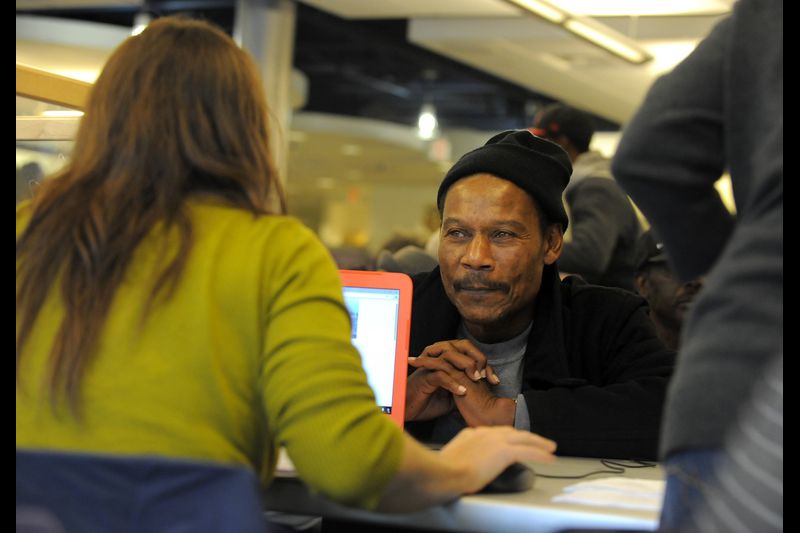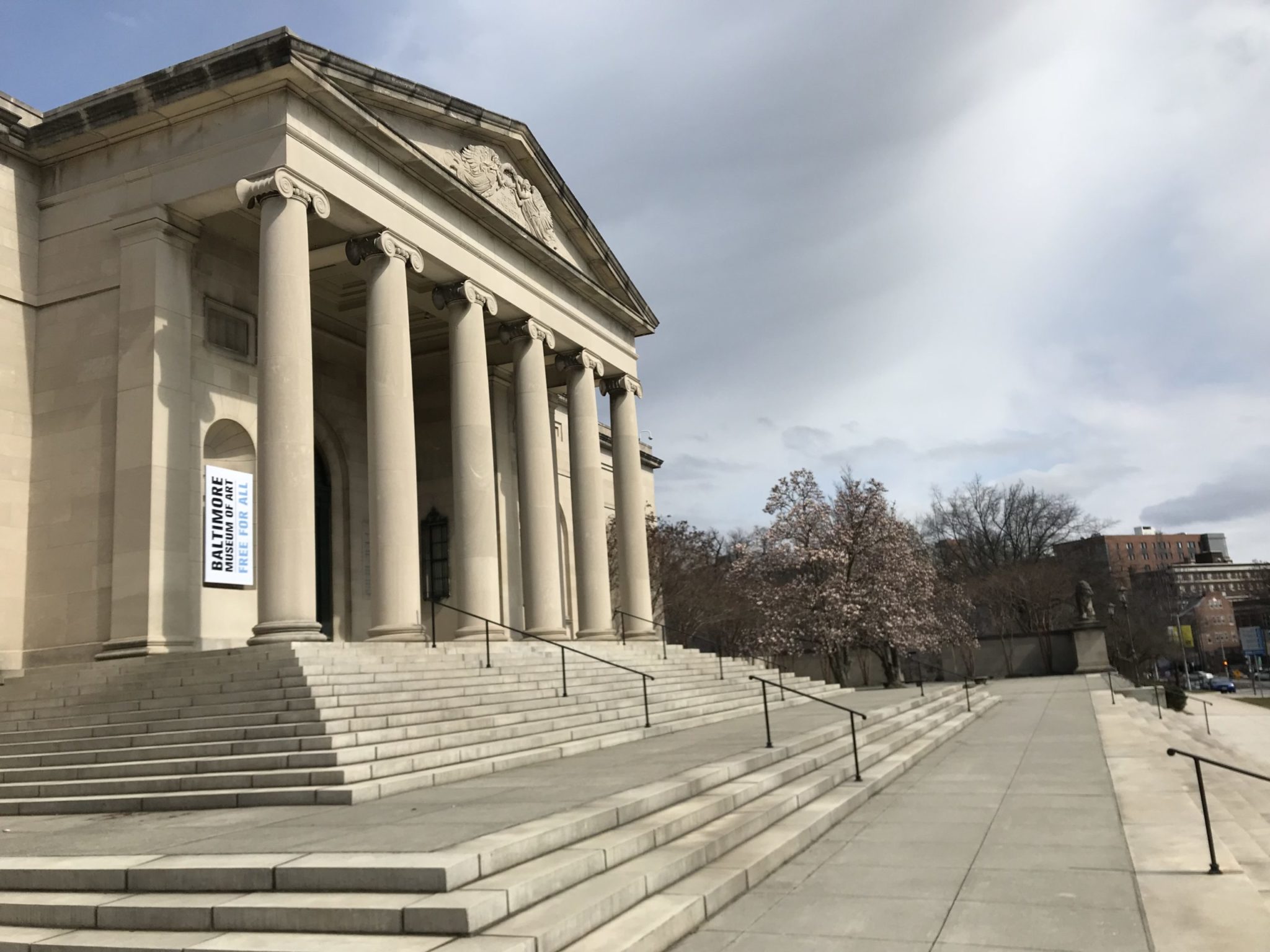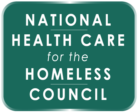More links related to these stories:

Theodore “Teddy” Maddox
– As told by Katherine Cavanaugh
After 30 years in prison, Theodore “Teddy” Maddox was released onto the streets with no family and no place to go.
He found a community with Baltimore Health Care for the Homeless and became a leader and advocate before his death in one of the city’s abandoned buildings in February 2017.
Teddy’s friend Katherine Cavanaugh, National Consumer Advocate with the National Health Care for the Homeless Council, tells his story.
A Stern Look, but a Soft Smile
“Teddy” was actually Theodore Maddox. In the first conversation we had, Teddy was pretty intimidating. He’s got a pretty stern look to him. But the more that I talked with him in that conversation, he started to smile. He has just a great smile and so I could tell that there was more to this person that I really wanted to know.
He was an older African American man who dressed to the nines all the time. He wore black shoes that he shined every morning before he got up and out of the shelter or once he got to staying with a friend, once he got out of there. He would always wear a nice sweater and slacks. He would always tell me how much nicer I needed to dress and how sad it made him that a beautiful woman like me would walk around like that. It was just always a fun time when he would kind of make fun of how I dressed. Some of our best laughs I think were when he would talk about that.
My office faced a window where I could see the hallway across from me. Teddy would stand across my office so I could see him and usher for me to let him in and sit in my office talking about all of the things that he had seen and all the things he wanted to change and figuring out who could he talk to about this and who would be good connections to make. He was such an inspired soul. He was so funny to talk to and interact with.
From Foster Care to Gang Life
Teddy was born here in Baltimore in Sandtown-Winchester. In the 60’s and 70’s Baltimore saw a huge decline in investment that especially hit the African American neighborhoods first and the hardest. We saw a rise in drugs, epidemics, and poverty. Teddy grew up in a neighborhood that was disinvested in. He was growing up in conditions and housing that just wasn’t appropriate—there were abandoned houses down the street and drug dealers on each corner.
He grew up in foster care, so he went from home to home. He grew up feeling like he never had a home, never had family. He felt like people were using him for the funds. When he was 12 he got into this foster family that he really connected with his mother. That foster mother was a really good support person for him at that point.
But at that same time, he was walking to school every time seeing dealers on the corner and having some of his friends start joining as corner boys and selling drugs and joining into gangs. They were talking to him about the appeal of the family and the connections and how he could be provided for and taken care of. That really appealed to him and he got seduced into that lifestyle.
He worked his way up in the gang and was transporting drugs, heroin mostly, up the 95 corridor, which is pretty big on the east coast. He got caught for a felony possession of a large quantity and did 31 years.
Released Onto The Streets
After 31 years he was released onto the streets, nothing in his pockets, no connections. He slept across the end of the bridge across from Health Care for the Homeless. That was a pretty safe encampment. A number of people were staying there at the time and so he stayed there. Outreach workers would come and talk to him, but he wouldn’t engage in services.
When I say that Teddy had a hard façade but a soft smile, I think that was very much his personality and a learned behavior from his existence. At the core he was a very kind, gentle soul, but he had built a very tough exterior to make it through his childhood, through his young years on the streets, and then through the gang life. Then in prison he had put up a pretty harsh, tough exterior.
He had spent so much time trying to isolate himself and trying not to form connections and relationships with people that when he got on the streets and was staying in the tent, he felt a lot of privacy and felt safety there because he was so comfortable being isolated and on his own. It took him a while to feel comfort and trust being around large groups of people.
He was outside HCH for two years just watching people, watching things, and he kept seeing Tony [Simmons] come around. He kept hearing Tony’s name as an advocate and as someone who was really caring for the homeless and passionate about the work. Finally, Tony got him to come into a Baltimore housing meeting and that was when we all first got introduced to Teddy. That was kind of Teddy’s first connection to HCH.
In their own words:
“The world Teddy grew up in.”
Becoming an Advocate
He started coming to our Housing for All meetings, which are local advocacy group meetings that we hold at HCH. He started getting involved more with the Baltimore HCH and our advocacy work, testifying down in Annapolis, engaging with our local Speaker’s Bureau here, and sharing his story. He got involved in our consumer relations committee and on the board of our HCH. He did a ton of work here just trying to engage in the community and try to promote solutions and support people using his story
Teddy also came down to speak at the National Health Care for the Homeless Council. He came down to one of our D.C. conferences and spoke at our rally. I think that was really amazing and impactful for him to be able to share and speak to a national audience in D.C. and also to really connect his story and how he felt about how we don’t care for communities and how that affects the people who live in those communities.

He was always out trying to engage in the community and find ways to engage and advocate. He was at Lexington Market and he met someone who was doing an outpost exhibit with the Baltimore Museum of Art. He started talking with her about his work around homelessness and housing advocacy and developed a connection with this artist to bring an exhibit to Health Care for the Homeless and develop an exhibit around what home means to people. They created a “What Home Means” exhibit and then worked to create it here at the Baltimore HCH. Then they put one at the Baltimore Museum of Art and had several outposts locations. Teddy was instrumental in bringing that to us. That connection in bringing that advocacy art connection was incredible.
Not Vulnerable Enough for Housing
He started staying with some of the friends that he met at Baltimore Housing, he stayed with Tony for a bit. He was doing pretty well. He had taken care of medical issues and had talked to a therapist, the first time he had done therapy in a meaningful way in a long time. A little bit after that he started going to a methadone clinic and tried to get off of his addiction to opioids and kind of face that in a significant way.
But then, the housing that he was living in with two different people here fell through. He’d gotten put onto our public housing waiting list in Baltimore City, that can be up to a seven-year waitlist. He was pretty far down just because of the VI-SPDAT, the vulnerability index. He didn’t have a lot of vulnerabilities, so he was further down on the priority list. That was a really hard time for Teddy.
I’ve circled with a lot of thoughts that I’ve heard from a lot of people would come into my office and really struggling with this idea of, “Well, do I need to go back out on the streets and get myself worse in order to get stability? And not take help and not go to medical care and not do these things so I can get worse so I can get housing?”
That kind of mental struggle with him was a hard place and that kind of kicked him back into a relapse, and he started using heroin, injecting it again. We finally got him access to a housing voucher, and so he had a housing voucher but was going through the process trying to find a place that would take him, that would accept him that he could afford.
It was during that time he had gone through his second reapproval to try to go out and find something and we got news that he had been found from an overdose in a bando. There’s about 16,000 vacant housing units in this city at least, and so that’s where a lot of people experiencing homelessness in Baltimore tend to stay or to use, is to just go in abandoned houses, which we call bandos. Someone who was using with Teddy had alerted that he had overdosed in that bando.
That was really hard for all of us I think. Just knowing how much he had fought for all his life and that he always felt like he didn’t have a home and he didn’t have a place to be. He had kind of felt like HCH at this point was his place. He felt like he had a community and people, but even we didn’t have the resources that he needed to take off a lifetime of trauma and an inability to deal with that. It was just too little too late and we weren’t able to undo that life of trauma that had happened to him.
In their own words:
“He lived a hard reality.”
Teddy’s Lasting Impact
I have a tattoo of a teddy bear on my ankle specifically for Teddy. His story and his life and our relationship is important to me because of his story and what it means for me and my work. It reaffirms this idea that we can’t end homelessness by working to end homelessness. If I’m going to be impactful in this work we need to be looking at the root causes and how do we prevent this stuff from happening in the beginning. How much love and happiness and community he found at the end was important and meaningful for him, but it was still just not enough.
If we really want to look at how we end homelessness we need to look at how we prevent trauma from the beginning and we create communities where people feel love and dignity from the beginning and feel supported.
He was discharged with nothing, no money, across the bridge, no connections, no support, no case management, nothing. And just after 30 years of going through systems and systems, didn’t even feel safe enough to go to Health Care for the Homeless. It took him two years to even feel enough trust or safety to walk through our doors. The amount of pain and trauma that must have been weighing on him, I can’t imagine it. Teddy had a hard reality and he lived a hard reality.
Teddy’s story just reminds me to stay grounded and focus on what the solutions are and that really gets back to ending poverty and ending racism, making sure people are provided for, ensuring human rights, housing, health care. Teddy’s story really reminds me to do that.
What can you do to stop homeless deaths?
Join us in working toward a world in which no
life is lived or lost in homelessness.
